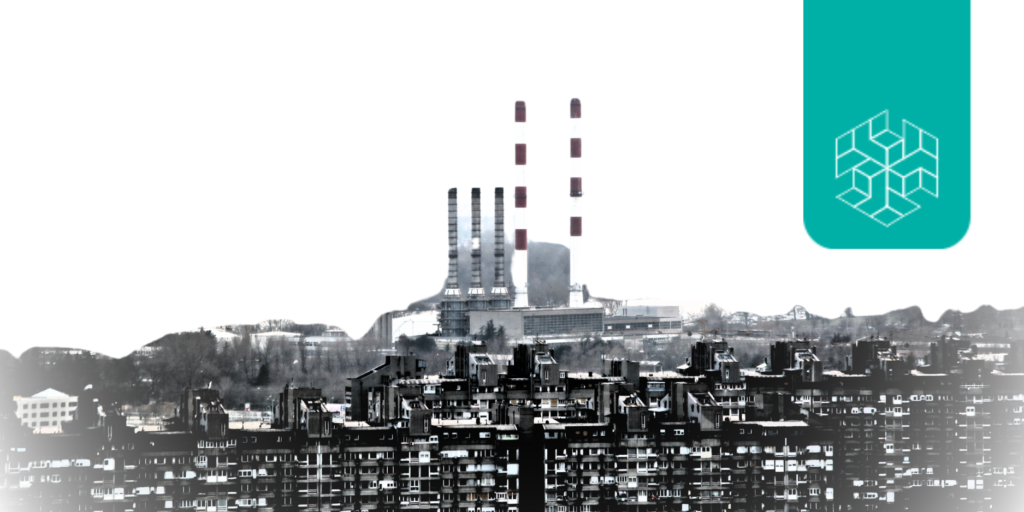Author: Nitika Khaitan
Editor: Soumya Singhal
ABSTRACT
Special courts are an oft-touted solution to the judicial delays plaguing Indian courts. Legislative and executive leaders, civil society members, and even judges often resort to calling for them when faced with case pendency, particularly in heinous cases of sexual assault, etc. However, inspecting laws and judicial orders setting up special courts shows inconsistencies in the conceptualisation and implementation of these courts, rendering them largely ineffective. This commentary shows how special courts remain in name alone in such a scenario. It argues that without necessary structural changes, such courts will continue reflecting the same problems as the judiciary instead of solving them.
KEYWORDS
Judiciary, judicial reform, case pendency, judicial delay, fast-track courts, speedy justice.
INTRODUCTION
Special courts, i.e. courts empowered to look at only a specific category of cases, are a widely-touted solution to several problems of the Indian judiciary. First, Indian courts suffer delays and backlogs (Datta & Rai, 2021). Lawmakers often invoke these courts to speed up the disposal of the case categories they are empowered to adjudicate and help eliminate the overall pendency of cases (Sakshi, 2017). Second, regular courts lack the infrastructure required under certain laws, such as vulnerable witness courtrooms under the Protection of Children from Sexual Offences Act, 2012 [POCSO]. Laws such as POCSO that require extraordinary arrangements allow these courts to be established under them (Smruti Tukaram Badade v. State of Maharashtra & Anr., 2022).
Recently, politicians, lawmakers, and even civil society have routinely invoked special courts as a solution to the judiciary’s woes (Correspondent, 2016). For instance, in the aftermath of several high-profile cases of sexual assault, various leaders have called for the establishment of such courts that look at such cases alone to allow speedier justice (Express News Service, 2014). Moreover, it has become commonplace for the legislature and executive to contemplate setting up special courts under the diverse new legislation– from social legislation to insolvency laws (Mani, 2018).
However, the rhetoric around special courts omits any discussion around their mechanics and how they function. The inconsistent constitution of special courts under different laws defeats the purpose of setting them up. Special courts often operate like regular courts and mask existing problems of the judiciary rather than providing a remedy.
INCONSISTENCIES IN ESTABLISHING SPECIAL COURTS
According to a study on special courts in legislation between 1950 and 2015, laws “interchangeably use the terms ‘set up’ or ‘designate’” with special courts, even though these terms carry completely different connotations (Sakshi, 2017). Setting up a court implies creating a court with new infrastructure and personnel (ibid.). Designating a court means allocating additional case categories to a judge still responsible for their regular workload (ibid.). The study found 28 laws providing for special courts between 1950 and 2015. Of these, 15 ‘set up’ special courts, 10 ‘designated,’ and 3 mandated both (ibid.).
In practice, the government appears to have conflated ‘setting up’ or ‘designating’ special courts despite what the text of the legislation may state. Under the 15 laws setting up special courts, barring one, state governments appear to have only designated such courts (ibid.). Moreover, some laws mandate the government to establish special courts, requiring that it “shall,” while others give the government discretion in deciding, saying that it “may” (IAS Parliament, 2018). Statutes additionally use terms such as ‘constitute,’ ‘create,’ ‘notify,’ and ‘appoint’ without providing definitions, leading to more significant ambiguities and difficulties in implementation (ibid.).
The executive’s and judiciary’s ad-hoc decisions to establish special courts without legislative consultation exacerbate inconsistencies even further. The 14th Finance Commission in 2014 recommended establishing 1800 ‘fast-track courts’ between 2015-2020 to expedite “cases of heinous crimes; civil cases related to women, children, senior citizens, HIV/AIDS etc. and property related cases pending for more than 5 years” (Department of Justice, n.d.a). These fast-track courts are also a type of special court as they adjudicate some instances in the hope that these cases will be disposed of faster. Nine hundred nineteen of these proposed fast-track courts were functional as of February 2022. Still, no information is available on whether these courts were set up or designated (ibid.).
In 2019, the central government launched another 1023 fast-track special courts scheme to speedily dispose of rape and POCSO cases (Department of Justice, n.d.b). In an entirely separate proceeding in 2019, the Supreme Court also ordered that an exclusive special court for POCSO cases be established in each district with more than 100 POCSO FIRs (In Re Alarming Rise In The Number Of … vs. Smt. Shashi, 2019). According to the Department of Justice, 399 exclusive POCSO courts and 712 fast-track special courts overall are operational as of February 2022. However, it is unclear whether the other fast-track special courts were designated or set up or whether they exclusively hear rape cases or other cases as well (Department of Justice, n.d.b).
In another instance of judicial ad-hocism, the Supreme Court in 2017 ordered the government to establish special courts for “expeditious trial of criminal cases involving MP/MLAs” (Ashwini Kumar Upadhyay v. Union of India & Anr., 2021). A year later, the Supreme Court changed its directions for Kerala and Bihar. It directed their High Courts to assign MP/MLA cases amongst existing courts without hiring additional judges or creating additional courts. This directive came in the light of “the difficulties of distance and territories” that hindered “the trial of cases by the Special Courts” in these two states (ibid.). The Supreme Court’s varying orders, and their ambiguities and misinterpretations, have caused inconsistencies across states. The Allahabad High Court, for instance, misconstrued the Supreme Court order and illegally transferred cases from magisterial courts (the lowest level of courts) to Sessions courts (one level higher than magisterial courts) while establishing special courts (ibid.). A Madras High Court Committee report argued that the Supreme Court’s directions were not legally permissible. Special courts can only be offence-centric and not offender-centric. Hence, MP/MLA special courts can not override the jurisdiction of other existing special courts, such as courts under the Prevention of Corruption Act, 1989, which try several cases against MPs and MLAs (Legal Correspondent, 2021). 10 MP/MLA special courts are currently operational in 9 states (Department of Justice, n.d.c).
PROBLEMS INHERENT IN SPECIAL COURTS
The confused and inconsistent establishment of special courts and the tendency to ‘designate’ instead of creating additional infrastructure have impeded the objectives of special courts. Data on their performance is limited. Nonetheless, available statistics indicate that it has ranged from abysmal to inadequate. As of the beginning of 2022, for instance, pendency in fast-track courts rose above 10 lakh cases, including 2.26 lakh pending POCSO cases (Thakur, 2022; Wire Staff, 2022). Despite the POCSO Act stating that the special court “shall complete the trial, as far as possible, within a period of one year” from taking cognisance of the offence, 69% of cases disposed of by POCSO courts in 2019 took between 1-10 years (Salve, 2021). As of December 2019, 89.5% of rape cases and 88.8% of POCSO cases in fast-track courts were pending (ibid.). According to 2018 data from the National Crime Records Bureau, 78% of trials in fast-track courts took over a year, 42% took more than three, and 17% took more than five (Agarwal, 2020).
Several factors contribute to their failure. In practice, since special courts are mostly only designated and not set up, they are plagued by the same problems as regular courts, if not worse (Bajpai & Smrithi, 2019). Overburdened judges are assigned other categories of cases to dispose of alongside their existing workload without additional infrastructure or support staff. Here, the disposal rate of all cases would slow down (Salve, 2021). Moreover, speedier case disposal cannot be expected without relaxing procedural requirements or making special courts more streamlined (Agarwal, 2020).
The ad-hoc nature of judicial and executive decisions to establish special courts also means that some categories of offences are arbitrarily prioritised over others for speedier disposal. Where discretion is provided to the executive to establish special courts, its decisions are rarely based on quantitative or qualitative evidence. For instance, even though Prevention of Corruption Act cases make up a tenth of the cases under the Scheduled Caste and Scheduled Tribe (Prevention of Atrocities) Act, more special courts have been established under the former than the latter (Sakshi, 2017). Even when the decision to establish special courts is taken legislatively, it is not accompanied by any reasoning on pendency. Often it is motivated by a knee-jerk response to specific incidents, such as the securities scams in the 1990s (ibid.).
Lacking the dedicated infrastructure and funding needed to make any difference to judicial delays, special courts appear to indicate “a larger problem of ad-hocism with regard to the establishment of courts in the country” (Khaitan & Prakash, 2017). Constituted with little to no examination of their on-ground functioning, special courts appear to be a rhetorically appealing solution to the judiciary’s complex problems. Called by whatever name, special and fast-track courts often belie their nomenclature in their operations. They further contribute to and reflect issues of inadequate infrastructure, overburdened judges, and scarce funding. Unless dedicated special courts are established with separate infrastructure and streamlined procedures, special courts will remain a solution on paper alone.
REFERENCES
Agarwal, Y. (2020, October 31). Why have Fast Track Courts Failed in India? The Leaflet. https://theleaflet.in/why-have-fast-track-courts-failed-in-india/.
Ashwini Kumar Upadhyay v. Union of India & Anr., Supreme Court of India, Writ Petition (Civil) No. 699 of 2016, order dated 24.11.2021 (2021). https://main.sci.gov.in/supremecourt/2016/29079/29079_2016_1_303_31575_Order_24-Nov-2021.pdf.
Bajpai, G.S. & Smriti, K.P. (2019, April 24). Slow fast-track courts. Deccan Herald. https://www.deccanherald.com/opinion/main-article/slow-fast-track-courts-730501.html.
Correspondent. (2016, July 7). Rally urges State govt to reopen fast track court in WKH. The Shillong Times. https://theshillongtimes.com/2016/07/07/rally-urges-state-govt-to-reopen-fast-track-court-in-wkh/.
Datta, P. & Rai, S. (2021, September 9). How to Start Resolving the Indian Judiciary’s Long-Running Case Backlog. Carnegie Endowment for International Peace. https://carnegieendowment.org/2021/09/09/how-to-start-resolving-indian-judiciary-s-long-running-case-backlog-pub-85296.
Department of Justice. (n.d.a). Fast track courts (FTCs). Ministry of Law and Justice, Government of India. https://doj.gov.in/fast-track-courts/.
Department of Justice. (n.d.b). Fast Track Special Courts (FTSCs). Ministry of Law and Justice, Government of India. https://doj.gov.in/fast-track-special-court-ftscs/.
Department of Justice. (n.d.c). Special Courts for MP/MLA. Ministry of Law and Justice, Government of India. https://doj.gov.in/special-courts-for-mp-mla/.
Express News Service. (2014, April 17). Fast-track all crimes against women cases. Indian Express. https://indianexpress.com/article/india/india-others/fasttrack-all-crimes-against-women-cases/.
IAS Parliament. (2018, March 26). Understanding Special Courts. https://www.iasparliament.com/current-affairs/understanding-special-courts.
In Re Alarming Rise In The Number Of … vs . Smt. Shashi, Suo Moto Writ Petition (Criminal) No. 1 of 2019, (S.C.).
Khaitan, N. & Prakash, S. (2017, March 29). Fast-track courts: flattering to deceive. DNA India. https://www.dnaindia.com/analysis/column-fast-track-courts-flattering-to-deceive-2372689.
Legal Correspondent. (2021, November 15). Supreme Court to look into validity of special courts for MPs, MLAs. The Hindu. https://www.thehindu.com/news/national/supreme-court-to-look-into-validity-of-special-courts-for-mps-mlas/article37510758.ece.
Mani, V. (2018, August 6). Govt plans eight special courts under NCLT to deal with insolvency cases. Business Standard. https://www.business-standard.com/article/economy-policy/govt-plans-eight-special-courts-under-nclt-to-deal-with-insolvency-cases-118080500591_1.html.
Sakshi. (2017, January 3). What is special about special courts? The Hindu. https://www.thehindu.com/opinion/op-ed/What-is-special-about-special-courts/article16978952.ece.
Salve, P. (2020, December 11). What’s Slowing Down India’s Fast-Track Courts. India Spend. https://www.indiaspend.com/police-judicial-reforms/whats-slowing-down-indias-fast-track-courts-700397.
Smruti Tukaram Badade v. State of Maharashtra & Anr., SCC OnLine SC 78 (2022).
Thakur, P. (2022, February 15). Fast-track courts going slow, pendency crosses 10L cases. The Times of India. https://timesofindia.indiatimes.com/india/fast-track-courts-going-slow-pendency-crosses-10l-cases/articleshow/89581001.cms.
The Wire Staff. (2022, March 26). Over 2.26 Lakh POCSO Cases Pending in Fast-Track Courts, UP Has Over 60,000: Govt. The Wire. https://thewire.in/law/over-2-26-lakh-pocso-cases-pending-in-fast-track-courts-up-has-over-60000-govt.



